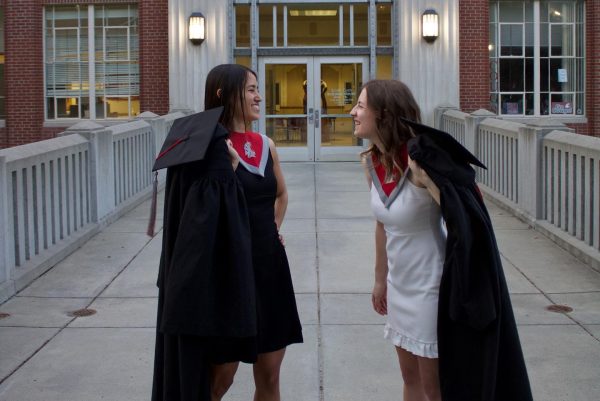Hop back in time
March 14, 2014
Neon lights, up-tempo songs, and time caught in the nostalgia of 1930s nightlife hides in the heart of downtown Moscow.
Every Wednesday and Thursday night, the room above CJ’s Nightclub becomes a dance floor for country and East Coast swing, respectively.
“It’s an opportunity to go into a social situation already having something in common,” said Becca Saunders, sophomore zoology and Spanish major and regular participant.
Jessica Newhouse, American Social Dance professor, said the history of swing dancing goes back to the ‘20s when it started with the jazz movement. It became more popular in the ‘30s and ‘40s when it adopted flashier moves similar to those found in tap dancing.
Swing dance diminished in popularity during the 1950s but made a reappearance in the 90s.
Today, the style is making a comeback across the world, with international lindy hop championships and clubs in Asia dedicated to the style, Newhouse said.
Maureen Bonnefin, president of Moscow’s Swing Devils, said the Thursday night dances include East Coast swing, Charleston, Lindy Hop, Balboa, and Shag.
“I have my life in this generation and this time period, and Thursday nights I completely change and I can connect with a different populous,” Newhouse said.
Keeping with the old-school vibe, these nights are high-energy with a social atmosphere. East Coast swing music stays mostly true to its roots by playing ‘30s and ‘40s jazz and blues. Country swing is more modern with current contemporary songs one would hear on the radio.
Bonnefin said one of the biggest differences is the music played for each style, but because country music also has roots in blues, the two styles can easily cross over.
“At the root of it, East Coast and country swing are the same dance,” Bonnefin said. “The biggest difference is the music that is played.”
Apart from the musical differences, Saunders said country is a little easier to pick up on the first time. The simpler rhythm and beat are good for beginners to learn.
East Coast swing is a little harder to take up. The movements are slower than the fast-paced country swing and more rigid. Newhouse said this is mostly because the two styles are from two completely different eras of swing dancing.
“It’s an easy, relaxed environment,” she said. “It comes to life with everybody’s different style.”
Newhouse said the fact that the dance area is above a bar sometimes scares people off. However, the event is separate from the bar and is open to everyone. Ninety percent of the participants are college students, but middle and high school students also have participated.
“I think that it’s a totally different atmosphere learning to dance in a class versus being able to dance socially,” Saunders said.
For those new to the style but wanting to learn a little, there’s a lesson on how to do a basic East Coast swing steps from 8 p.m. to 9 p.m. on Thursdays. The lessons are good for beginners or returners looking to review the basic skill set, Newhouse said. The actual event starts at 9 p.m.
Along with the Thursday night classes, Swing Devils of the Palouse brings swing dancing instructors in and holds workshops.
Saunders said she never had an uncomfortable experience at either swing night and saw it as a good opportunity to meet other people who love to dance. However, sometimes there is a shortage of male leads, she said.
“You dance with one lead and have a certain experience and then dance with another lead and it can feel entirely different,” Newhouse said.
Country swing night takes place on Wednesdays for $5 and East Coast swing is on Thursdays for $3, and both dances both start at 9 p.m. More information about Swing Devils can be found on its website at swingdevils.org.




















